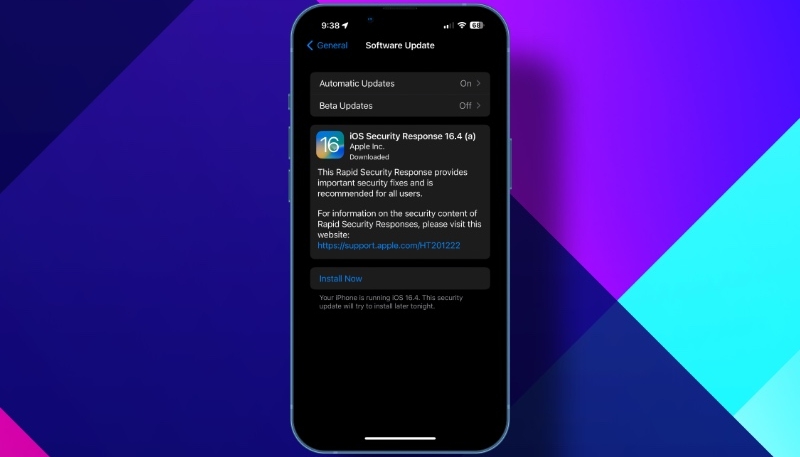Apple on Wednesday released updated Rapid Security Response (RSR) fixes that are available for iPhone and iPad users who have installed the iOS and iPadOS 16.5.1 updates, as well as the macOS Ventura 13.4.1 update.
Rapid Security Response updates allow Apple to push out important security fixes to devices without requiring a user to perform a full operating system update. Today’s updates address an actively exploited WebKit vulnerability, so it is a good idea to update as soon as possible.
iOS Security Response 16.5.1 (c) is available through the standard Software Update mechanism in the iPhone or iPad Settings app. macOS Ventura Security Response 13.4.1 (c) can be installed through System Settings. The update is a quick one, requiring just a couple of minutes to download the update and then a quick restart for the installation process.
Once the iPhone Rapid Security Response update is installed, iOS 16.5.1 users and macOS Ventura 13.4.1 tapping on the version in the About section of Settings will display information about the installed iOS or iPadOS version, as well as the Rapid Security Response update.
Apple initially introduced these Rapid Security Response updates earlier in the week, but the way they were named caused issues with Safari. Select websites began showing a warning about not being supported on the Safari browser following the RSR update.
As a result, Apple pulled the updates until it came up with a fix and provided information to users on how to remove the updates.
Those who want to remove Rapid Security Response updates on their iPhone, iPad, or Mac can do so by following the steps found below.
Removing Rapid Security Response on Your iPhone or iPad
By default, Rapid Security Responses are installed automatically, but Apple does offer a way to remove them.
You can remove a Rapid Security Response from your device by doing the following:
- Go to Settings -> General -> About.
- Tap iOS Version.
- Tap Remove Security Response.
You can then reinstall the Rapid Security Response at a later date, or wait for it to be installed permanently as part of a standard software update.
Removing Rapid Security Response on Your Mac
- Click the Apple logo () in your Mac’s menu bar and select System Settings…
- Click General in the sidebar.
- Click About.
- Under “macOS,” click the info button (the encircled “i“) next to the OS version.
- In the “Last Security Response,” section, click the Remove & Restart button.
- Click Remove Response and Restart in the confirmation prompt.
The Rapid Security Response update will now be automatically removed from your Mac.


